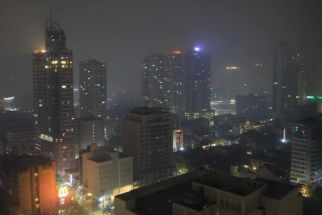It’s all worth the hard work
The August 11, 2006 oil spill off Guimaras was such a disaster that it generated unprecedented response, including rapid response from local governments and communities, national government agencies, NGOs and other sectors. However it is a complex problem such that the response should be science-based and properly coordinated.
The oil spill has increased public awareness of oil spills but has also led to many misconceptions. An example of the latter is that the use of dispersants in shallow water habitats and on the organisms themselves is good. There were also contradicting statements issued by certain sectors.
Expertise is available but this needs to be harnessed and coordinated. More than a month after the oil spill, the question remains: Are there sufficient resources for response and mitigation?
Given this situation, we the undersigned:
• Recommend an objective analysis of the technical aspects of the oil spill, its impacts and the response (i.e., the science of an oil spill), so that we may learn from it and minimize impacts of future spills.
• Such analysis will evaluate actual Guimaras events against the established first line of action in preventing arrival of the oil along the shoreline by means of containment and removal while at sea; and failing that, regulated application of acceptable dispersants within hours of the spill event. The decision to use dispersants should be done collectively with proper consultation.
• We strongly recommend that the use of dispersants in shallow water habitats such as mangroves, seagrass beds, and coral communities should be avoided given that bunker fuel is not amenable to treatment with dispersants, the toxic effects of dispersants, and their contribution to spreading the impacts over a wider area.
• In these shoreline habitats, the recommended line of action is mechanical or manual removal (following biosafety protocols) followed by bioremediation, in that order. The application of bioremediating agents should follow assessment protocols under the supervision of DOST, DENR and UP Visayas. Application of approved bioremediation could entail simple addition of nitrogen and phosphorus fertilizers in appropriate doses at appropriate times, as in the successful case studies of the 1978 Amoco Cadiz and 1989 Exxon Valdez oil spills.
• We recommend that a national protocol for responding to spills be formulated with clear responsibilities, accountability, and transparency of the agencies identified.
• We support the designation of the University of the Philippines in the Visayas as the coordinating institution for research.
• We also urge the authorities to remove the remaining oil in the sunken vessel as soon as possible given the likely complications that will occur with the impending shift in the monsoon winds. Note that the option of pumping out of oil is associated with many risks.
• All this must be done with renewed sense of urgency given the likelihood that additional delay until the Northeast monsoon season will further spread the oil to the south and west of Guimaras Strait - to similarly critical areas unaffected so far. This will exacerbate the situation with regards to the environment, and consequently livelihood and human health.
Signed by the Participants of the Scientific Meeting on the Biophysical Aspects of the Solar I-Oil Spill off Guimaras, this 15th day of September 2006 at the SEAFDEC Aquaculture Department, Tigbauan, Iloilo
- Latest


























